Hot topics click link for more
In The Numbers
 For the radio people growth is seen as coming from podcasts, smart speakers like Amazon’s Alexa and mobile internet, anything that might appeal to “ad friendly” young people. Out is the kitchen radio (what’s a kitchen?) and the automobile (what’s a car?), all so last century. There is so much to learn.
For the radio people growth is seen as coming from podcasts, smart speakers like Amazon’s Alexa and mobile internet, anything that might appeal to “ad friendly” young people. Out is the kitchen radio (what’s a kitchen?) and the automobile (what’s a car?), all so last century. There is so much to learn.
There are few proven rules to winning ratings battles other than being on is far better than being off. Sometimes new brands attract fans. Most of the time, well-known brands fix better into daily routines. Since no broadcaster really knows one day to the next what audiences will do with their media time the spaghetti rule applies. It’s easier than watching the pot.
Lifestyles and demographics have long challenged media designers. The digital age has brought this into plain view, if not necessarily plain sight. Adopting all this blinding change doesn’t seem like change at all to some, just a moment with Instagram. Resistance is futile though fist-shaking certainly feels good.
Brand loyalty continues to challenge the media sphere. Those darned young people are brand switchers. They see media brands differently, some say, identifying more with digital platforms and smartphone apps. Legacy media brands are doomed, say the same prophets of digital wisdom. Alas, media consumers aren’t paying attention.
The greatest competitive advantage always goes to broadcasters who “hear” the audience best. Sometimes this secret runs counter to critics, media buyers and, yes, the technology people. Taking the long-view, no matter how difficult, helps to tune-out the noise. These are important talents.
Uncertainty is a rude force on conventional media wisdom. The audience wants their expectations fulfilled, except when they don’t. They want to see, figuratively, their reflection, so long as it’s very pretty. Then, too, they want to find what they’re looking for, preferably without major expense or lifestyle change. Uncertainty brings out frustration but only for a moment.
Branding for media outlets can be complicated. Listeners, viewers and readers develop their preferences over years. Brand identity is, then, defined by expectations long developed giving huge advantage to traditional outlets. Needs, wants and expectations have, however, their own trajectory. Successful media brands manage their identities by watching their audiences. It doesn’t work the other way around.
With digital transition firmly taking hold of the fertile imagination, attention spans notwithstanding, firm data is ground control. More data should yield greater understanding. Indeed, it does. But that depends on what, exactly, folks want to understand. After that, everything is just as complex as it was last week.
 Pity the poor media buyer. With audience estimates for various segments appearing minute by minute there is no time to reflect. Fortunately, algorithms do all the heavy lifting now. When the numbers change very little it is an opportunity to consider a leisurely cruise and dance with the robot.
Pity the poor media buyer. With audience estimates for various segments appearing minute by minute there is no time to reflect. Fortunately, algorithms do all the heavy lifting now. When the numbers change very little it is an opportunity to consider a leisurely cruise and dance with the robot.
The media sphere is increasingly challenged by identities. What people identify with informs, more and more, their media choices. As media offerings expand to this challenge differences become more pronounced. The smartphone culture of the individual is both a comfort and a curse. Nothing attracts like attraction and everybody can choose.
Broadcasters have different brand strategies, each suiting a particular customer. Audience reach is obvious but often just a means to an end. Complex strategies can be tricky, confusing the customer very risky. Atop everything shareholder’s needs and interests must be satisfied. The meetings can seem endless.
As audiences shift public broadcasters face a certain quandary. With money and wherewithal to adopt new technical platforms legacy brands can be victims on institutional inertia. New channels can be developed easily. Older ones, typically with huge structures, seem to run out of energy. Private sector broadcasters don’t have that problem.
It is a mad pursuit, the quest for bigger audience. Competitive strategy is defined by risk-taking. Passing through one goal post in search of another is grand success. Still, the means often entail blue smoke and mirrors. Everything is now virtual.
The audience is changing. On this there is total agreement. Everything else is a debate. Traditional platforms are waning, digital ascending, says conventional wisdom. But new platforms are evolving requiring people to constantly adapt or return to tried and true media consumption. The enduring question for media people is where should the investment go.
Every few years media measurement gushes anew. Media buyers arouse this periodically in search of the answer to advertisers’s ultimate question: where’s the money? Then, too, media suppliers have their own questions. Big data holds the too obvious solution.
The preferences, interests and attitudes of young people, shifting as they will, cause considerable anxiety within the media world. This is not particularly new. The young have irritated their elders forever. Accused, typically, of incessant devotion to fun young people are also insatiably curious. There’s a news story here.
The digital tipping point has certainly arrived. Platforms are convenient and well in hand, literally and figuratively. While choices remain very traditional new offerings get a hearing, so to speak, from those looking for something new. And, as usual, people are paying attention. They always have.
 Serious news is all around, every day. Media outlets rise to the occasion informing, certainly, and reflecting public anxieties. But the popular reflex also seeks reassurance and, often, relief. People find what they need, when they need it, many places.
Serious news is all around, every day. Media outlets rise to the occasion informing, certainly, and reflecting public anxieties. But the popular reflex also seeks reassurance and, often, relief. People find what they need, when they need it, many places.
Some media trends can only be appreciated in the long view. Regular bumps in audience flow - up or down - can appear rather insignificant, easily explained by the weather, for example, or survey sampling. As the media sector trades on immediacy, ever quickening, a long view lifts a deep shadow.
Broadcasters once benefitted from setting appointments, telling people when to tuned in. Self-promotion was essential, an art-form even. Always-on digital natives, it’s believed, are having none of this. With everything at their fingertips, quite literally, finding it now competes with having it all.
In a fixed media universe competition is straightforward; tactics overwhelming strategies in battles to gain advantage over the other guys. Positioning lessons based in product marketing urge clarity, utility and availability. But, as physics teaches, the universe is constantly expanding. In the distance is either the great white light or a black hole. The audience wants to know.
Digital platforms are eclipsing the analogue. That much is clear. Millennials have never known a day without digital access. But they’re getting older, set in their ways, reverting to tradition, harder to attract. So the media world now moves on to Generation i, never without their smartphone. And soon they’ll learn to talk.
It is immutable. There is something old about radio. And it is not just the listeners getting older. As platforms expand listeners are checking out new channels and taking some seriously. It isn’t the old platforms that are under threat, it’s the old brands.
A necessary tool in the audience measurement kit is sampling. Counting everybody is hardly efficient or even necessary. Collecting the best data from real people requires a reliable count of how many are there. There is no need to drain the entire body of blood when a simple finger prick is sufficient explained opinion research legend Elmo Roper deep in the last century when the science was a little more frightening. Researchers today take great care in where the needle is inserted.
Economic theory offers that consumers are, after all, quite rational. Absorbing information they deem necessary choices are made. That information comes from a lot of sources or, most often, just a few. Restricting choices doesn’t necessarily nudge them along, disruptive opportunities quickly appear.
 Technology continues to give media users joy with clever new tricks. Some people notice, some need reminding. Fans are necessary; they tune in, not to forget take the surveys. While programmers are fussy with music lists, DJs, jingles and promotions, the first - and oldest - rule is nothing matters if they can’t hear it.
Technology continues to give media users joy with clever new tricks. Some people notice, some need reminding. Fans are necessary; they tune in, not to forget take the surveys. While programmers are fussy with music lists, DJs, jingles and promotions, the first - and oldest - rule is nothing matters if they can’t hear it.
Nothing affects a media environment more than dramatic, breaking news. Media outlets offer details, often non-stop, and, also notable, escape from agonising subjects. People universally want to know what’s going on where they live. Leading edge outlets keep this firmly in mind.
Media consumers are, mostly, confined. They hear, see and touch what is nearest. This is called proximity, the branding concept considered the strongest. The web, smartphones and the rest of new media has the potential to change all of that, testing the ties that bind media outlets with their best friends. It is a challenge.
It is a sign of the times that broadcasters, when faced with a restless audience and restive advertisers, struggle for balance. "Build an audience and the money will follow" rings hollow in the digital era, automated media buying only one challenge. Big media brands are at greatest risk because when money is scarce doing "more with less" pinches. And the audience notices, of course.
Broadcasters have long counted on young people for energy, boundless curiosity and a weld to the future. Old people are set in their ways and, today, that means so very last century. Adapting to the "shake it off" set transfixed on smartphones is now elemental, surprisingly simple and a great comfort to those adept. Mass audiences are, some say, a thing of the past. Still those who count are still counting.
An easy path to digital transition for the media world somehow got lost in the fog. The road has been littered with great ideas that collapsed from fatigue of one kind or another. To those leading the march patience is not a virtue. Others take it all in stride.
Ratings can be so cruel. Getting folks to tune in is difficult. Getting them to say the right things to survey interviewers even more so, or so it can seem. Losing is always a surprise, winning far too simple.
 The closer we look at a market the more it changes. It is the lesson from physics for those pouring over numbers that dutifully report snapshots. The numbers are, of course, givers of life for all in the media. What was true yesterday is different today. “Let the devil take tomorrow,” said the songwriter.
The closer we look at a market the more it changes. It is the lesson from physics for those pouring over numbers that dutifully report snapshots. The numbers are, of course, givers of life for all in the media. What was true yesterday is different today. “Let the devil take tomorrow,” said the songwriter.
Broadcasters have found many surprises in the digital dividend. Some are nice, others not quite. Audiences migrate with ease from one platform to another, looking for something new and different or old favorites. One trend suggests platform carries significant weight in brand choice and, of course, they keep changing.
Audience acquisition means everything to a broadcaster. There’s content to be created, talent to be managed, marketing to be devised, promotions to be organized, distribution to be acquired. Hitting all the posts is difficult, costly and absolutely essential. Then there’s the market leader effect. When top brands falter, the entire category feels pain.
It is a daily struggle, hourly actually, that fight for ratings. New ideas are always welcome, except when the audience gets irritated. Having a big, recognizable brand is always good, except when it gets tired. Then sometimes people go on holiday and everything changes.
How many sports metaphors can be fit into a programming plan? Everybody sees, finds, shifts or moves “the goal posts.” And everybody looks for, dodges or admires “the slam dunk.” After “kick off” keep your “eye on the ball.” There are more, just ask.
Consolidation is an appealing business strategy. All those economies of scale bring joy to investor’s hearts, wherever that might be. After the digital dividend brought a decade of experimentation and fragmentation, media organizations are pulling back to leading brands. Market shares might be rising but consumers are still going digital, looking and listening for something new. It’s a quandary.
Once upon a time, radio broadcasters could count on brand name benefit. Legacy brands have always held value through tough times and new entrants often adopted safe monikers, typically from a consultants list. Fast fragmenting tastes are giving music channels even more branding problems. Talk show hosts have become the new giants.
 One of the great inevitabilities is the next ratings period. There are others, some more permanent. For programmers and managers find this an opportunity for change, knowing all the while audiences can be very resistant. Inertia is not a viable strategy.
One of the great inevitabilities is the next ratings period. There are others, some more permanent. For programmers and managers find this an opportunity for change, knowing all the while audiences can be very resistant. Inertia is not a viable strategy.
The great debate among radio programmers, raging for more than a generation, pits branding versus mechanics. Branding for radio is more than names – or name changes – and is the essence of image. Proponents fight the competitive battles with advertising and promotion. More tactical programmers fight with music rotations, word count and timing. The point is getting listeners – and advertisers – to notice.
The news is the news is turning. Privately-owned broadcasters are challenging public radio channels known for news and information. Public broadcasters – and the politicians who run them – are reading the ratings and do not like what they see. But changes are just so negotiable.
The audience chooses favorites. Sometimes new favorites get the nod, if they’re easy to find. Otherwise, people keep coming back to the best known brands though they hate being bored. You can’t outsmart them.
National audience estimates, particularly those measuring most every person breathing, serve an important purpose. They focus the attention of owners, operators, media watchers and, sometimes, the public at large on broad strokes; winners and losers. Only media buyers tangle themselves in detail. And everybody knows the next ratings period is more important than the last.
Conventional wisdom holds that programmers must not upset the audience. With so many buttons to push, figuratively, people easily change channels. The challenge for broadcasters is to share the same moment. Music and news are only ingredients. More emotion is necessary.
Broadcasting has survived it all; from consolidation and brand experiments to the digital dividend. The audience has taken it all in, tuned in and stayed loyal. Rough changes in ratings, sometimes scary, only prove how people respond. There’s value in that.
Where smartphones and tablets are more popular than pets, big television operators are rushing to find a marketing advantage in the “second screen.” Always walking on the edge, advertising people want a clear pathway to consumers’ hearts and minds. Data extracted from social media, even if limited to the legal stuff, when combined with TV viewing data is today’s nirvana for media buyers.
Perhaps it is the spirit of the times. Hit music is again a winner in audience surveys, news and information not so much. For private broadcasters it’s a good thing. But public broadcasters face questions.
Mature markets become predictable. It becomes a goal for organizations as surprises, even good ones, can be jarring. Consolidation is both a benefit and a necessity. The downside, though, is consumer ennui.
Data is revealing, even audience data. Looking at it carefully can make a broadcaster crazy or smart. There are lessons to be learned. Most important of all, the people are listening.
Market leaders have a certain competitive advantage. There’s experience, coverage and, not to be forgotten, financial security. Competitors, particularly in the digital age, have advantages too. A shift in the landscape is no surprise.
Springtime brings the flowering of many things. It’s a time when many broadcasters contemplate changes, revisions and updates, whether the ratings are good or not so good. The objective, of course, is keeping the audience coming back.
Good management tackles hard choices. In these times of changing audience behavior and new platforms strategies are increasingly short-term and tactics mostly fleeting. Then, too, there’s the cost of it all. Brands matter but that’s not all.
Tough times turn broadcasters to joint ventures and acquisitions to hold on to market share. While some media houses throw in the towel, others are seeing sunshine. But content is still king as new channels attract audiences.
Ratings are not a spectator sport. You show your cards every day. Some days you win. And then there are others. When you come to the table be prepared to play.
It is normal to scour survey data for patterns, trends and other means of simplification. We are, of course, looking for a picture drawn by numbers. When the passing snapshot jumps off the page we call it insight. Maybe there’s more.
Audience targeting is a strategy. Programmers learn that big shifts have consequences, some intended and some not. Commercial channel managers like salable targets, young people historically. But they’re subject to mood swings. The answer might be 30-somethings.
 Audience listening levels, over time, indicate more than simply the health of the radio sector. Big, well-financed channels with wide distribution become and remain market leaders. But time is not always good to market leaders. Listeners like change, sometimes.
Audience listening levels, over time, indicate more than simply the health of the radio sector. Big, well-financed channels with wide distribution become and remain market leaders. But time is not always good to market leaders. Listeners like change, sometimes.
Nothing moves the ratings needle more than distribution. Without it, people can’t find you. But that’s only part of a broadcasters work. Being there, here and now with what people want is a minute-by-minute job, made always more interesting when those minutes are increasing.
Audience shifts can arrive abruptly or move slowly, like the sands of time. These are not times when broadcasters can easily tolerate the gradualist approach. Pressure is on programmers – and the marketing geniuses – to move the needle. Sometimes it takes a new dance step.
Prudent market analysis looks for patterns of audience behavior. The digital revolution has change that but not in every expected way. The digital audience, growing steadily, seems to have its own track. And it changes. Program basics, though, still rule the markets.
Markets can be cruel. Consolidation can be necessary. For the media sector there is no perfect formula. Dynamics, market and otherwise, often point in different directions and change quickly. It’s like riding a shark.
Audience surveys always hold that certain truth. As the story unfolds we learn something about what people want and will tune-in for. Very little is predictable these days and that makes for very interesting reading. Of course, there are tears.
Predicting what moves the ratings needle has never been easy. Too many variables, the researchers say. Some days you get the ratings and some days the ratings get you. The audience is fickle and travels in a pack.
There’s nothing like a bit of a shake-up when the ratings arrive. Media buyers have something new to think about, often stressful. Programmers are divided; either a bonus or out the door. It’s a good time for a beer.
Industry strategies often have unpredictable effects. Designs for improved market share or profits are easily tangled by competitive complications or the demands of pesky consumers. The dynamics can yield unintended consequences.
 Broadcasters regularly complain about audience surveys, unless the numbers are really good. Economic stress has all managers on edge. Survival is success, say some. And now the “blades” are out, too.
Broadcasters regularly complain about audience surveys, unless the numbers are really good. Economic stress has all managers on edge. Survival is success, say some. And now the “blades” are out, too.
The audience can be cruel and unpredictable. Just when programmers detect a trend it disappears into thin air, the atmospherics of time and place. There is, though, always opportunity to reinvent.
Legacy media brands are on the rise. Oh, yes, there are a zillion channels available on every sort of platform. All those new ones add to the mix, certainly, but the folks keep coming back to the tried and true companions.
The digital platform debate has been pushed off the table. The audience, as usual, won. Next to the podium is local versus national, or hyper-local versus quasi-national. How to keep them happy – and tuned in – won’t be easy…or cheap.
Where public broadcasters are ubiquitous and well-funded, private channels have a tough fight. But fight they will for audience and advertising. Some are turning in some quite good numbers by emphasizing local content, good marketing sense and a boost from digital platforms.
Reviewing another slice of the recently ended holiday season shows how audiences remain undeterred by fun and frivolity. Economies are tanking and listeners just can’t get enough news, albeit in slices. And, too, there’s a lot of button pushing going on. It’s a trend.
Broadcasters bank – literally – on the first big audience surveys after the summer break. It’s about the money with media buyers, contemplating the traditional retail season, adjusting their plans. But ratings are like that box of chocolates: you never know what you’re going to get.
Media brand building is more than simply choosing a clever name, not to forget that unique program plan. Legacy brands are stronger than ever. But new brands are quickly populating digital platforms. Once consumers find the addresses, they will either find something they expect or, well, something else.
 The verdict was announced 30 years ago when “Video Killed the Radio Star” was the first tune on MTV. If that wasn’t enough, the iPod arrived 10 years ago sending radio broadcasters into a tizzy. The radio medium has been pronounced dead over and over and over again.
The verdict was announced 30 years ago when “Video Killed the Radio Star” was the first tune on MTV. If that wasn’t enough, the iPod arrived 10 years ago sending radio broadcasters into a tizzy. The radio medium has been pronounced dead over and over and over again.
Higher listening rates are encouraging to radio broadcasters. Almost everywhere more people are tuning in. Evidence is emerging that much of the increase is coming from the Web. Ad revenue is sure to follow.
It has been a remarkable year for the news media. Local, national and international events of stinging scale have riveted people to media outlets, many rising to the occasion. And everybody just wants to keep on top of it all.
Some broadcasters are rocked by audience ratings. Some just roll with them. The trend points to changes and more changes. It’s best to get used to it.
Competitive markets in times of economic stress face changes galore. Promotion and marketing leaps to attract attention. Formats are born, discarded and born again. Every broadcaster looks for an edge. Then the measurement changes.
Media measurement blends science, art and a little faith. Methods are strict, typically, following the usually and customary blessings of social scientists and statisticians. Computing power and the web has brought mountains of data to all wanting to know who hears, sees and, now, clicks. The more you look at it, the more it moves around.
 With baited breath, broadcasters await survey results, that quarterly panic. Some, typically, are relieved when the day comes and others are relieved from their jobs. Occasionally there’s euphoria. Occasionally there are wobbly feet.
With baited breath, broadcasters await survey results, that quarterly panic. Some, typically, are relieved when the day comes and others are relieved from their jobs. Occasionally there’s euphoria. Occasionally there are wobbly feet.
It’s said that all politics, all advertising and all ratings are local. And winter quarter ratings reflect very little excitement anyway so any changes seem really important. But listeners eventually come out of hibernation.
Conventional thought among most broadcasters holds that stable ratings are better, lest the ad buyers be frightened. Changing a few things about the survey, though, keeps the ad buyers guessing. We wouldn’t want them to get bored. And boring it was not!
Most everyone in the television world is just pleased as punch with the Great Recovery of 2010. Swept away are the spider webs of recession, depression, viewer confusion, advertising dearth and austerity budgets. Bigger is back; audiences, advertisers, screens and shows. What’s not to like?
To follow conventional wisdom, every media outlet would now be engaged with social media. Attracting Twitter followers and Facebook fans more than simply compliments audience marketing it may become just as important. There are a few secrets to engaging those who want to engage.
When the numbers come out it’s natural to reach for the most obvious, big winners and losers. More often ratings reflect subtle changes, the ebb and flow of consumer behavior, marketing and the brilliant programming. Then, too, there are the seasons.
Every measurement service hears the same thing from broadcasters. When ratings are up, credit the brilliant programming. When they’re down, blame the measurement. But even with good ratings some broadcasters are questioning the methods.
Media people are often driven, more than anything, by a need for motion. Management, marketing or programming changes can be very exiting. There are meetings. There are PowerPoints. There are new people. Then there are the ratings.
Nothing moves radio listeners more than high profile personalities. When those personalities move from channel to channel listeners start fiddling with their radios. Sometimes it works and sometimes not.
News and information are truly significant to radio programming. When news is hot and there’s lots to talk about channels significantly branded for letting people know what’s going on get a ratings benefit. The news-talk listener is loyal, to a point, and doesn’t react well to changes.
A robust media market thrives on a responsive audience and good competition. All of it is rather unpredictable. And that’s the good news because audiences seem to like changing their channels.
 Economists remind us fondly that a rising tide lifts all boats. Surfers like riding the crest of any wave. Sailors know the difference between high tide and a storm swell. Broadcasters could be happy if they weren’t afraid of drowning.
Economists remind us fondly that a rising tide lifts all boats. Surfers like riding the crest of any wave. Sailors know the difference between high tide and a storm swell. Broadcasters could be happy if they weren’t afraid of drowning.
Studies of media culture, new and old, abound. Consultants and researchers are asking lots of questions, the answers to which point in the same direction. The future will arrive.
In almost every market, recent radio ratings have shown significant changes. Audiences, it appears, have become unpredictable. Programmers and media buyers will have much to think about over the summer.
In the news business, it’s a given that ratings rise and fall with big news. Only so much can be done to pump up ratings when nature and politicians turn quiet. Not to worry: something always happens.
Public and private sector broadcasters live in different worlds, or so they profess. The mandate is different. The money is different. But when ratings day arrives it’s all the same: who wins and who doesn’t. It's traditional.
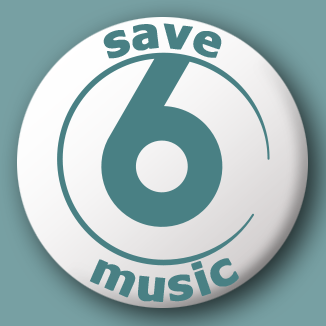 Nothing drives ratings more than something fresh romping through the humdrum. Getting that right is no simple challenge. So when the ratings are up, there’s plenty of genius to applaud.
Nothing drives ratings more than something fresh romping through the humdrum. Getting that right is no simple challenge. So when the ratings are up, there’s plenty of genius to applaud.
National stations and local stations are different. Big city stations are different, too. Within it all, audiences are increasing. Broadcasters are finding opportunity as the folks continue to spin that dial.
The ubiquity of the mobile phone has become a basic building block of the media world. Only cave-dwellers question the power of this device, loved by consumers, to deliver a different business model. The measurement people know this.
Radio talk shows continue to push the right buttons, on the radio dial that is. Show hosts are big brands and when channels make changes entire markets shift. And more people tune in.
Casual observers may gloss over the fine detail of media surveys. The hard core – statistical anoraks – bite hard on every change and nuance. With all audience surveys, the devil, as they say, is in the details.
With so much media activity in, on and around new media, it is hardly a surprise that people have gravitated to new media. TV stays TV, radio stays radio and newspapers stay newspapers until they migrate to the Web and mobile phones. It is, of course, where the people are going.
 Radio listeners have a way of expressing themselves, noted when big surveys are released. When listeners give broadcasters good news, it’s like an affirmation of doing the right things. In a media world turned upside down, some broadcasters see reason for changes.
Radio listeners have a way of expressing themselves, noted when big surveys are released. When listeners give broadcasters good news, it’s like an affirmation of doing the right things. In a media world turned upside down, some broadcasters see reason for changes.
Judging from early returns – ratings, that is – this year starts almost where it left off. Audiences are still falling. It’s the fault of everything. The best advice may be to keep a good sense of humor.
Whether it is the spirit of the times and people want to hear voices on the radio or theirs is just so much to talk about, the trend toward more talk is growing. Perhaps music listeners are attached to their iPods or maybe music just stinks. Perhaps programmers should be spending more time with show hosts and DJs and less with the music computer.
Peruse another audience survey and take a deep breath. Within those tables and graphs are signs of post-digital life. The people are voting what they know.
Maybe the ‘long tail’ theory isn’t completely dead. Big broadcasters are adding as many brand extensions as they can to bulk up sagging audiences. New channels - offered by others – are attracting a lot of attention.
One trend emerging across Europe over the last year has been rising audience shares for legacy channels. Start-ups have a very tough time. It’s not always the case.
 New media has raised both supply of and demand for media. Households spend more time and money with media and media products. Demand drives supply. The down-side hurts, too.
New media has raised both supply of and demand for media. Households spend more time and money with media and media products. Demand drives supply. The down-side hurts, too.
The Dutch have a special relationship with radio. Dutch broadcasters love their hit music stations and chart shows. Inside each is still a little bit of the pirate.
Defying trends in other media, radio listening levels in many countries are growing. At a time when media watchers fall all over themselves reporting new media usage up and all other fading away, radio is attracting more people. There are many clues and no consensus.
“A rising tide lifts all boats” is a favorite saying in some quarters. It’s particularly apt for the radio broadcasting sector, which feels woe be taken by the onslaught of new media. When more people are tuning in things can’t be so terrible.
The fun – for some – in looking at new audience figures is seeing which stations are up and which are down. Measurement companies take that fun away when changing methods and systems. Oh, well, we must look forward.
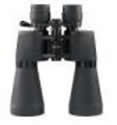 There are few secrets to attracting and holding audience. Programmers learn to spot a trend and make the best of it. Obvious trends are finite, duration limited. Meta-trends are harder to recognize.
There are few secrets to attracting and holding audience. Programmers learn to spot a trend and make the best of it. Obvious trends are finite, duration limited. Meta-trends are harder to recognize.
The secret to success in the audience ratings business is minimizing change. A little motion is good to show, best for keeping journalists interested. But media buyers are genetically at one with accountants. Best not to lift the green eyeshades.
With the great 21st century platform shift there’s more audience out there broadcasters have discovered. Tracking them down is something of a challenge. It may take non-linear thinking.
Scale makes major cities media-rich in every dimension. Talented people are attracted to the action and make the most of it. In turn, major media capitals are always at the tipping point of delightful chaos.
Spring has sprung, here in the northern hemisphere. Almost all the first quarter audience figures have bloomed like the trees, sending the more allergic broadcasters to hankies or drugs. Sure, the DJs are still up to their tricks, pop music stinks and the sales people can’t sell. It’s a great day when not much happens.
Lousy music and too many bad commercials drive listeners away. So do stupid DJs. None of this is new for radio programmers. The bigger threat to commercial radio is consolidation, too few channels all sounding alike. It could be fatal.
 Radio listeners are connecting with music channels, just not the ones you would expect. Anxiety bitten broadcasters, honing playlists to 300 of the best researched titles, can’t stop the audience drift. Maybe they are asking the wrong questions.
Radio listeners are connecting with music channels, just not the ones you would expect. Anxiety bitten broadcasters, honing playlists to 300 of the best researched titles, can’t stop the audience drift. Maybe they are asking the wrong questions.
Public broadcasters watch audience surveys carefully, despite protestations to the contrary. Since the commercial radio’s arrival more or less a generation ago public broadcasters have braced themselves for the release of audience figures. Champagne days may be returning.
The beautiful Maltese archipelago stretches into the Mediterranean off the Italian coast. It is the southern most point in the European Union. The climate is warm. Maybe that’s the reason most Maltese either don’t listen to the radio or don’t know which station they’re hearing.
Radio works best – attracting more attention, that is – when it steps outside that safety and security zone with new and different, sometimes wild and crazy. Old familiar channels, and their managers, practicing risk management bore listeners to tears. Well-known brands seizing the moment – and the technology – always win. And occasionally there’s a new Bob in town.
Broadcasters and publishers dare not blink this week, next week or the nanosecond after that. Digital media is upon us. What we’ve learned is to look everywhere for learning.
 The news of the week is that news is back. And it’s on the radio. More people are tuning in. Digital platforms matter, too. What’s not to like?
The news of the week is that news is back. And it’s on the radio. More people are tuning in. Digital platforms matter, too. What’s not to like?
Success factors for broadcasters, of the ratings variety, are many. Programming must be right. Marketing must be robust. Nothing, though, trumps plain and simple coverage.
Music fans, largely young people, now shun radio channels. Music players and the internet give them exactly what they want, exactly when they want it. Or do they? Or is it, perhaps, that radio listeners are really attracted to voices on the air?
Surprising some, Arbitron has named a new CEO. Surprising none, the company continues its transition to technology developer. The year 2009 will certainly be one of transitions.
 True to form French radio listeners offered up a few surprises. They come at a good moment, and better for some than others. This audience is never, completely, predictable. And broadcasters are facing the music.
True to form French radio listeners offered up a few surprises. They come at a good moment, and better for some than others. This audience is never, completely, predictable. And broadcasters are facing the music.
Two US broadcasters – Cumulus Media and Clear Channel Radio – have opened the door for the Nielsen Company to measure radio audiences. Nielsen will measure 50 small US cities starting Q3 2009. Nielsen has been active in radio measurement in the rest of the world but has stayed television-only in the US, giving Arbitron a near monopoly.
Summer ratings are refreshing, more so in hindsight. Little is similar with other seasons. We turn the radio on a bit later, maybe for a bit more fun, a little more energy, more diversion. The numbers tell all.
Television being the world-wide distraction of choice, governments look for opportunities to interfere with, say some, or improve, say others, the programs and the business. Audience measurement being not only the currency for trading air-time for ad spending but a means of picking winners and also-rans, broadcasters look for any competitive advantage. It’s logical, then, that governments would want ‘fair and balanced’ ratings. It’s logical, too, that broadcasters might be skeptical.
Television broadcasters expect measurement companies to show ever increasing audience. Without that the advertising people might just get bored. The French TV audience is shrinking. Are they distracted?
 The Czech radio market has been exciting for years. It’s a dynamic mix of national and regional broadcasters who don’t hesitate to mix things up and public broadcasters who do. And the recent audience survey shows that listeners are checking in and checking out.
The Czech radio market has been exciting for years. It’s a dynamic mix of national and regional broadcasters who don’t hesitate to mix things up and public broadcasters who do. And the recent audience survey shows that listeners are checking in and checking out.
Each semi annual ag.ma survey of German radio listening is a big deal. But the recent release is incomparable. The sample now includes younger kiddies and foreigners. What’s the fun of an audience survey if winners and losers can’t be spotted?
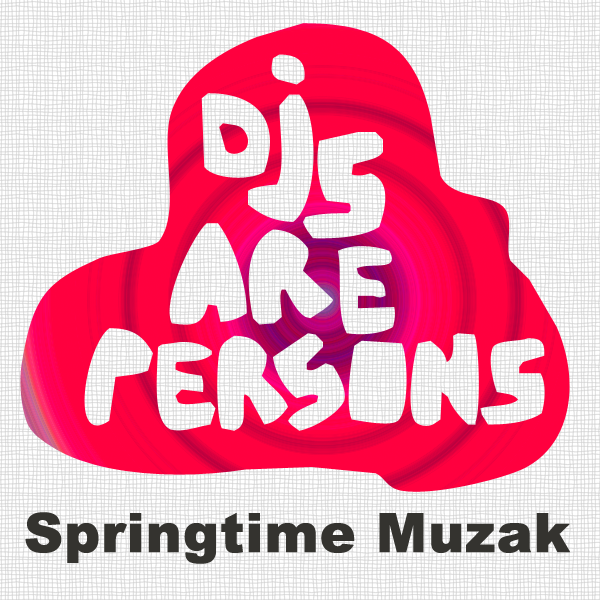 The UK commercial radio market got a boost from the latest RAJAR survey, slightly improving its audience share against the relentless onslaught of BBC radio channels. Talk channels and stations with lots of chatter lost audience, generally, to background music stations. Perhaps is just a mood swing.
The UK commercial radio market got a boost from the latest RAJAR survey, slightly improving its audience share against the relentless onslaught of BBC radio channels. Talk channels and stations with lots of chatter lost audience, generally, to background music stations. Perhaps is just a mood swing.
Listening levels in France drop noticeably. RTL stays on top. French public radio channels rise. Music channels keep moving up and down as they move programmers in and out.
Well, some have and some haven’t. But then one of the oldest anecdotes in broadcasting is: when the ratings are good, credit my brilliant programming, and when ratings are bad, blame the measurement system. The howling by several US broadcasters about Arbitron’s PPM system only grows louder.

Big national radio channels continue to draw the most listeners in Slovakia. The biggest have invested in marketing, promotion and new media. The recent radio audience survey shows fun and Fun Radio attracting higher ratings.
There needs to be a white paper, followed by a green paper. The first quarter audience survey arrived granting the BBC its highest market share in recent memory. Oh, digital radio is not dead and buried. The listeners have spoken.
 Creak! The sound you’re hearing is the door closing on the ambitious experiment to measure audience electronically. The gizmo works just fine. The problem, judged insurmountable, is that people just won’t turn the damned things on.
Creak! The sound you’re hearing is the door closing on the ambitious experiment to measure audience electronically. The gizmo works just fine. The problem, judged insurmountable, is that people just won’t turn the damned things on.
Each audience survey release seems to put broadcasters a bit more on edge. Some more than others, obviously; the French national radio audience is making a painfully obvious shift away from music to news and talk.
 Italian radio broadcasters are singing everything but the blues. Stunning results for the first launch of a national brand since 2005 show how much Italians just love the radio. And Italian ad buyers love radio, too.
Italian radio broadcasters are singing everything but the blues. Stunning results for the first launch of a national brand since 2005 show how much Italians just love the radio. And Italian ad buyers love radio, too.
Audience surveys are media’s life-blood. The fascination with ‘who’s up and who’s down’ is reflexive. Sure, the numbers have purpose; justifying either the ad rate or the license fee. But pouring over the data to divine a trend is tricky.
 In story, French life is wonderful; the wine, the women, the food. Add to that the almost daily Elysée Palace entertainment, the rest of us live in awe. Médiamétrie’s new report – Media in Life - shows just how wonderful it is.
In story, French life is wonderful; the wine, the women, the food. Add to that the almost daily Elysée Palace entertainment, the rest of us live in awe. Médiamétrie’s new report – Media in Life - shows just how wonderful it is.
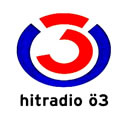
Some people like a stable market. Some people don’t. In broad strokes, the Austrian radio market is as unwavering as the Austrian Alps. The latest audience survey shows a strong market for radio and the growing influence of local broadcasters.

BBC’s lead over commercial broadcasters pushed higher, boosted both by local and national channels. And the latest audience survey shows another boost for digital platforms. Oh, and lots of people still listen to FM.
There is so much to talk about in France these days it’s just no real surprise that the national news and news talk stations continue to increase market shares.
The public broadcaster in Switzerland holds mighty high audience shares, overwhelming privately owned stations. The latest radio audience survey shows a few changes. By this time next year the country’s radio market could be quite different.
This could be one of those days when Arbitron CEO Steve Morris wakes up asking himself why he ever left that good job running the Maxwell House coffee business for General Foods. Yesterday (Wednesday November 14) four of his biggest clients – Clear Channel Radio, Cox Radio, Cumulus Media and Radio One – fired off a letter, provided to ftm, that began, 'It is with the utmost urgency and objection that we, your customers, send you this letter.'

A new problem surfaced this week for US media measurement agency Arbitron in their roll-out of radio audience surveys collected with the Personal People Meter (PPM). A big chunk of data from the Houston, Texas survey disappeared. Arbitron calls it an “error.” Broadcasters call it a crisis.

More people than ever tuned into UK radio during this years’ second quarter, says the RAJAR audience survey. During the same period iconic commercial radio station Capital Radio fell to fourth place in London. The stations’ 4.1% market share is its historical low point.
Across the globe and across all media measurement is the be-all and end-all to commercial success. As media buyers and ad agencies demand changes and enhancements to measurement systems, from cross-media, passive monitoring to ‘granular’ data, broadcasters either acquiesce or endure the financial consequences. Cox Radio CEO Bob Neil took questions from ftm on radio measurement and monopoly.
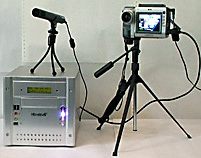 Those tricks used to increase page views like spreading stories over three or four pages to increase the number of pages accessed will soon become a thing of the past as Nielsen Net/Ratings switches the basis for its web ranking system to the time a visitor spends on a site rather than the number of pages accessed. And that should be a big boost for sites to greatly expand their video use, for how better a way to keep eyeballs on a site for prolonged periods of time than several one or two minute videos.
Those tricks used to increase page views like spreading stories over three or four pages to increase the number of pages accessed will soon become a thing of the past as Nielsen Net/Ratings switches the basis for its web ranking system to the time a visitor spends on a site rather than the number of pages accessed. And that should be a big boost for sites to greatly expand their video use, for how better a way to keep eyeballs on a site for prolonged periods of time than several one or two minute videos.
New media drives everything and its touch is universal. Médiamétrie’s new chairman let clients know that cross-media measurement (plurimédia) is the priority. He’s backing it up was a €35 million investment.
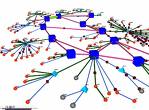
Accountability and technology are driving media measurement. These are also the twin drivers of media management. Content, however, drives media consumers. Who wins?
The first casualty of the French presidential election campaign– and the recent Médiamétrie audience survey – is France Info, Radio France’ rolling headline news channel. All French news and information channels, public and commercial, have seen their audiences rise – except France Info. The channels new director says the solution is making the station hot again.
 The ad girls and the web boys are circling around each other, a generational ritual filled with promises, passion, lies and, of course, money. The web boys – interactive media, to the serious – offer fast connections, big results and promises to please. The ad girls – those with the honey-money – play hard-to-get.
The ad girls and the web boys are circling around each other, a generational ritual filled with promises, passion, lies and, of course, money. The web boys – interactive media, to the serious – offer fast connections, big results and promises to please. The ad girls – those with the honey-money – play hard-to-get.

One conclusion from the just released Médiamétrie radio audience figures is a Presidential election effect. Or, so it seems. Overall listening is up, taking news and information stations higher and music stations lower.
News and information, soft hits up, hard rock and rap down
 Switzerland’s broadcasters introduced electronic measurement for radio first in the world nearly a decade ago. The TeleControl system for television measurement is considered a model for counting viewers of the blue glow in living rooms. A new management organization for all media measurement launches, officially, this week.
Switzerland’s broadcasters introduced electronic measurement for radio first in the world nearly a decade ago. The TeleControl system for television measurement is considered a model for counting viewers of the blue glow in living rooms. A new management organization for all media measurement launches, officially, this week.
The recently released Radiotest radio listening survey of the second half 2006 looked, at first, rather similar to the last. After closer consideration, three stations announced major relaunches, ad campaigns and, even, new jingles. “City Radio” is the new direction for Vienna stations.
Here’s one of the biggest problems a newspaper faces today, as explained by a Houston car dealer, when trying to convince an advertiser to stay with print rather than switch to the Internet: “We can pretty much measure an online cost per head. But if you put an ad in the Sunday paper it will probably cost more than $2,000 and you have no idea who comes through the door because of it. We’ve wasted a lot of money that way.”
That “beep-beep-beep” you are hearing is the signal from Project Apollo, just returned from the dark side of the moon. The ambitious plan to create a state-of-the-art (or, at least technology) American media and marketing research panel has been powered up – then down – so many times since first hinted in the last century it is a wonder the battery isn’t worn out.
RAJAR delivered a major blow to UK media conventional wisdom: radio listening is up. You can almost hear screams from newspaper publishers – with declining circulations – and TV executives – with declining audiences, except for the occasional scandal. Bloody Hell!
Winter arrived finally in Switzerland, blanketing all regions in white, fluffy snow. Skiers rejoiced. With the lush powder in the mountain resorts came more good news for the rich and powerful in Swiss broadcasting: the 2nd half-year radio ratings for 2006.
For centuries, poets and philosophers, long dead, have fawned over them. The new poets and philosophers – media and advertising people - fawn over them now. It’s the lifestyle, says Médiamétrie.
The last week was full of headlines on how television and Internet advertising viewership will be better measured, but that still leaves newspapers out in the cold. Just citing circulation numbers or general readership numbers, including the Internet, is not doing the job.
Summer radio surveys are always the pits. Programmers know that listeners are distracted by, well, summer. And managers don’t want to waste the marketing budgets when nobody is around.
 The hot prospect exciting the advertising people today is mobile media. They will not sleep until ads appear on your mobile phone. Their simple logic: the most desirable audience is not at home.
The hot prospect exciting the advertising people today is mobile media. They will not sleep until ads appear on your mobile phone. Their simple logic: the most desirable audience is not at home.
The new head of TNS iTRAM is Andrea Mezzasalma, who departs GfK Eurisko in Milan where he served as partner and vice-president. He takes over the iTRAM (Internet, Television and Radio Audience Measurement) unit from Mike Gorton, who is retiring.
 Wall-to-wall music stations – and BBC Radio 1 – win the latest London radio audience survey. Capital Radio resembles a cinder. Ah, the perils of a mature radio market in the midst of a smokin’ hot media market…
Wall-to-wall music stations – and BBC Radio 1 – win the latest London radio audience survey. Capital Radio resembles a cinder. Ah, the perils of a mature radio market in the midst of a smokin’ hot media market…
 Radiotest audience results for the first half of 2006 didn’t exactly raise alarms but there were no fireworks either. Public broadcaster ORF edged lower, raising questions about the trends. Radiotest audience results for the first half of 2006 didn’t exactly raise alarms but there were no fireworks either. Public broadcaster ORF edged lower, raising questions about the trends.
 The lowest radio listening levels in three years shock French broadcasters
The lowest radio listening levels in three years shock French broadcasters
 All media – except the internet and TV – falls and free sheet 20 Minutos becomes the top daily newspaper. Radio results are ugly and hard to read as Cadena COPE is delisted. All media – except the internet and TV – falls and free sheet 20 Minutos becomes the top daily newspaper. Radio results are ugly and hard to read as Cadena COPE is delisted.
 With the World Cup wrapping up and summer holidays set to begin the UK’s Radio Festival finally gives us the media news we’ve been waiting for : CONSPIRACY THEORIES.
With the World Cup wrapping up and summer holidays set to begin the UK’s Radio Festival finally gives us the media news we’ve been waiting for : CONSPIRACY THEORIES.
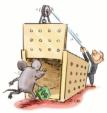 Not that long ago US audience measurement company Arbitron was poised to revolutionize the system. That was then. Today that revolution just got delayed…again.
Not that long ago US audience measurement company Arbitron was poised to revolutionize the system. That was then. Today that revolution just got delayed…again.
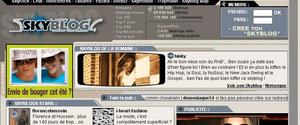 Blogs are seen by their fans as the quintessential example of new media, universal access to an interactive, searchable medium. To bloggers, mainstream media is both target and nemesis. But blogs – web logs – are going mainstream.
Blogs are seen by their fans as the quintessential example of new media, universal access to an interactive, searchable medium. To bloggers, mainstream media is both target and nemesis. But blogs – web logs – are going mainstream.
Upgrade and improve were the key words used by RAJAR (Radio Joint Audience Research) Managing Director Sally de la Bedoyere when announcing the long awaited new contract for UK radio measurement. Times are tough enough in the UK commercial radio industry without inflicting new trauma. RAJARs delicately prescribed measurement homeopathy provides a regimen for well-being, mental and physical.
 An amazing study released this week says that 61% of US babies less than one-year-old watch TV every day for at least an hour, even though the American Academy of Pediatrics says children under the age of two should not be watching TV at all.
An amazing study released this week says that 61% of US babies less than one-year-old watch TV every day for at least an hour, even though the American Academy of Pediatrics says children under the age of two should not be watching TV at all.
First quarter UK radio audience figures contained some of the predicted damage but also considerable relief to public and private broadcasters. The BBC’s audience continues to climb against commercial radio. Magic 105.4 spent £1 million and reached #1 in London while Capital FM was hammered into third place.
Think of the French national radio market as an automobile. Each quarter Médiamétrie measures the amount of air in the tires. Those front tires, on which the power-train puts most pressure, are slowly going flat.

Spanish radio network COPE caught cheating the EGM survey, then confesses, saying it was justified “journalism.” This story has everything, Dan: arrogance, deceit, expose, outrage and more.
Research Companies in Ad-land: Nielsen Says “NO,” Arbitron Says “OH,” TNS to Analyze - March 9, 2006
Timed for maximum ad agency appeal, major audience and market research companies sent signals about media measurement. Ad-land luminaries were aghast: how dare these simple suppliers visualize a separate reality.
The internet marches on in Spain, attracting more and more daily use, according to the Estudio General de Medios (EGM) report. Television, radio, magazines, weekly newspapers and cinema have declined in daily or weekly use. And, for the first time in five years daily newspaper use does not grow. Worst hit was cinema attendance, falling to 7.1% from 11% in 2001.
Bells are ringing at RAJAR headquarters as Ipsos reported its new electronic measurement device for radio passed the functionality test, the same test passed by ARBITRON’s PPM and Eurisko’s Media Monitor early last year.
 Radio listening estimates released last week by the UK’s Radio Joint Audience Research (RAJAR) for the fourth quarter 2005 gave yet another boost to BBC Radio. Commercial radio has mixed results and mixed reaction.
Radio listening estimates released last week by the UK’s Radio Joint Audience Research (RAJAR) for the fourth quarter 2005 gave yet another boost to BBC Radio. Commercial radio has mixed results and mixed reaction.
Distinct from the total of France is Paris and surrounding areas, the Ile-de-France. It is both broadly urban and, well, Paris. The Mediametrie 126,000 September to December regional survey released a week after the national results shows more about smaller. VOILA!
Médiamétrie results for November-December show general interest radio down, music channels down, youth channels down. Blame TV. Blame the internet. Voila!

In 18 months the percentage of UK households with digital receivers has nearly tripled to 10.5%, according to the Q3 RAJAR radio audience survey released October 27. Listening via digital TV has risen to 35.1%, internet to 13.5% and mobile phone to 6.1%.
The fundamental question of trust opened a wide ranging discussion with radio advertising specialists from Eastern Europe in Budapest.
The US media research company shared results from the extensive Houston, Texas trials. Measured with the Personal People Meter (PPM) people “tune into more stations more frequently but they listen for shorter periods of time,” said Arbitron/PPM President Pierre Bouvard. This was no real surprise as earlier Arbitron test results were similar. And, if broadcasters bothered to ask, electronic measurement for radio in Switzerland, now in its fifth year, has shown the same patterns.
FTM caught up via email with Allen Cooper, Research Director of InterMedia Survey Institute, with questions about the changing nature of international broadcasting, how that has changed the audience research done by the broadcasters and, inevitably, the role international broadcasters play in public diplomacy. Not an easy task as he’s more often the person doing the asking.
Shuffling brands and frequencies, consolidating further Sweden’s commercial radio spectrum, yields benefits to large group owners. Modern Times Group (MTG) – owner of RIX FM and Lugna Favoriter - took over the 20 frequencies licensed to NRJ Group. Ten were given to RIX FM and 7 to Lugna Favoriter with one in the three major cities remaining under the NRJ brand and format. Nationally MTG Radio increased market share to 23.8% from 18.1% one year on.
When the music stopped in the latest round of UK radio musical chairs Capital FM was back on top.
Hit music, NRJ Group stations posted losses in both the French and Swiss German speaking regions. Commercial radio gained market share in the Swiss German-speaking linguistic region, to 23.5% from 22.9% one year on, though dropping in French-speaking cantons to 25.5% from 25.9%. Public service broadcaster (PSB) SSR-SRG added audience to general interest and fine arts channels to increase PSB market share in the French-speaking zone to 57% from 56.2% year on year and to 62.6% in the Swiss German-speaking cantons from 61.7%.
Austria’s public broadcaster holds the highest radio market share in Europe. They’re tough, competitive and slipping.
The second phase of the German Media Analyse radio audience survey showed lower audience levels but few other surprises

Spring quarter Médiamétrie audience figures for French national radio channels showed listener losses for the biggest Radio France channels
NOP World released last week its Culture Score Index of media consumption in 30 countries. NOTA survey shows TV viewers are looking for “immediate dénouement.”
Movie studio advertising is really big business for newspapers and television. Open the movie section of a major metropolitan daily newspaper on a Friday and Saturday and usually there are pages and pages of studio ads touting their latest releases, let alone all those ads on television. But not as many as last year -- movie studios cut their ad spend by a whopping 11.2% in Q1, 2005.
Research in Spain and France show mobile phones and personal MP3 players on the rise. Broad-band, too. Other media: not so good.
BBC Radio has now stretched its lead over commercial radio to more than 10% market share, 54.2% for the BBC and 43.8% for commercial radio.
The top three French national channels hold their market positions, Fun Radio recovers, Europe 2 doesn’t, RMC Info and Les Independants move ahead.
What and how we measure media is likely to change what media does.
German Radio Audience
Radio audience figures were released March 9 for the whole of Germany by Media-Analyse, the joint broadcaster research institute.
This series of articles on radio in Germany focuses on the Radio 2005 I Media-Analyse results in the individual Nielsen zones.
Public broadcasters hold the edge in northern Germany, legacy stations slide.
Radio NRW and WDR, no competition.
Market history no advantage to private broadcasters
Big public and private channels post big increases
New top station in Germany's most competitive market
Targeted local stations gain on market leaders
IP France offers an extraordinary look at French national radio channels content and the listeners.
Czech survey shows strong audience for public radio.
And then there were two. GfK withdraws from UK electronic measurement competition after testing failure.
The BBC surges with Radio 2 reaching its largest audience ever, commercial audience shares lower.
New channels have added to the broadcast clamor in Scandinavia and public broadcasters are feeling the pressure.
News talk radio channel RTL solidifies its lead in the Ile de France (Paris) Médiamétrie survey for September-December 2004. RMC Info doubles audience share.
UK radio broadcasters reported satisfaction with RAJAR, its surveys and the march toward portable measurement.
The leading French national networks continued to lead while mid-pack stations swapped ranking in the recently released Médiamétrie survey of November/December 2004 French radio listening.
Milan-based Eurisko is the latest market research company to join the quest for state of the technology audience measurement.
Going to court is a great publicity stunt, until you lose.
The annual report on all Spanish media, released December 9, brightened the day for newspaper publishers. Radio network Cadena SER posts biggest national audience in its history.
YLE Radio Suomi leads national audience poll, Radio City up 60% one year after becoming a national channel.
Established stations losing audience in October Comcon radio survey for Moscow
RTL extends leading position in September/October Médiamétrie radio survey for Paris (Ile de France)
The April-October Czech Media Projekt from GfK Praha-Median-SKMO reports strong increase from Evrope 2, regional stations.
September/October Médiamétrie radio survey shows RTL leading in market share, NRJ in cume audience, again.
Audioradio publishes combined second and third quarter results for Italian radio.
Reading through reviews of recent European radio conferences it is striking how thinking small makes broadcasters happy.
Pop channel DR P3 jumps to 20.7% from 17.5% in Q2. 100FM (5.7%) edges past Sky Radio (5.5%).
The latest US market data makes for very sorry newspaper reading and helps explain why circulation numbers continue their downward spiral. Some 82% of young adults aged 18-24 choose the Internet or television as their primary information and entertainment provider.
More French are tuning in to radio and listening longer, according to the annual L’Année Radio report by Médiamétrie.
Capital FM surges at the expense of competitor Heart
Public network channels in Sweden rise above 50% of total audience
BBC national channels BBC1 and Five Live led the public network to widen its lead over commercial station
Three international companies will face side-by-side tests as RAJAR moves forward in its “roadmap” to replace diary surveys
GfK Praha presented the results of tests of the Radiocontrol electronic audience measurement system to Czech media groups.
A step-by-step plan leading to electronic measurement adoption was announced by the UK radio industry group charged with audience measurement.
The channels of public broadcaster SSR-SRG maintain dominance over commercial stations, according to studies presented at the annual RadioDay.
Audience figures affect share prices say UK commercial radio companies
Total radio listening continues a slow downward slide according to March-June 2004 audience figures released by RUAB
Ratings services in an ever-increasing number of countries are testing electronic measurement, potentially replacing the diaries listeners dutifully fill out or telephone calls that interrupt their dinner.
| 

